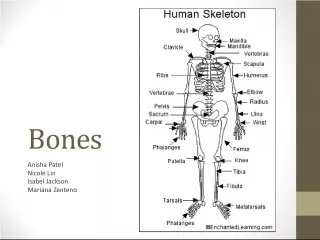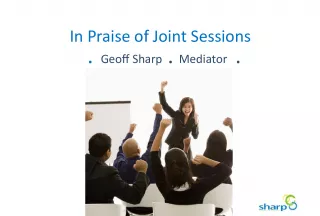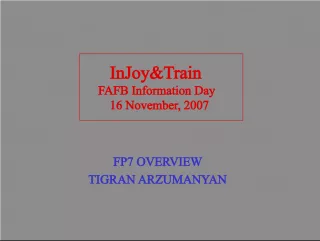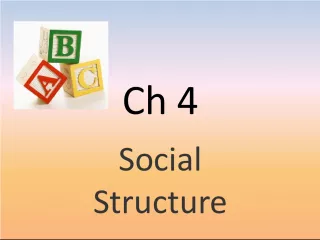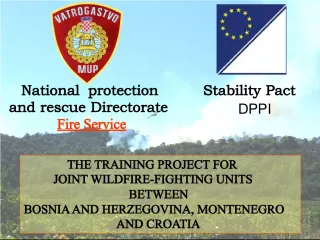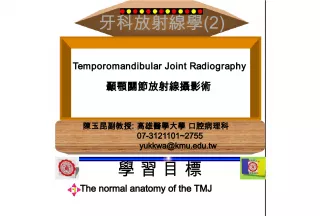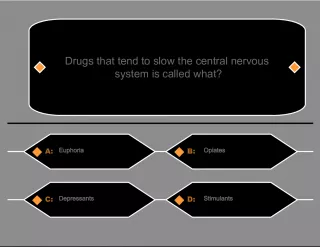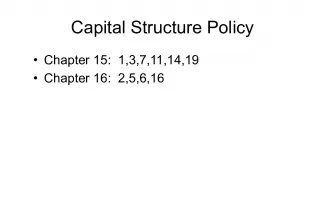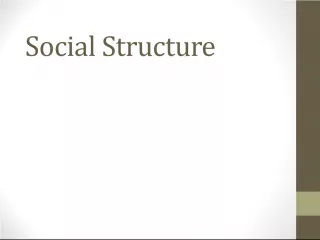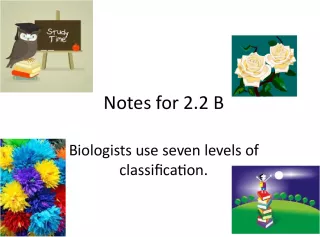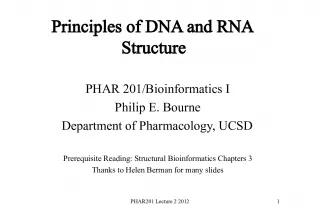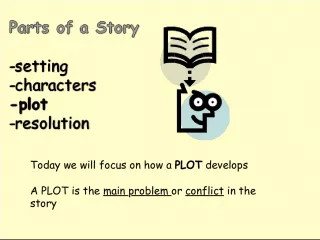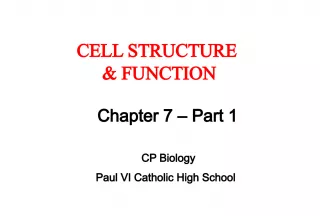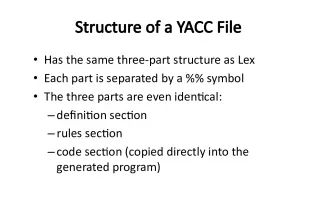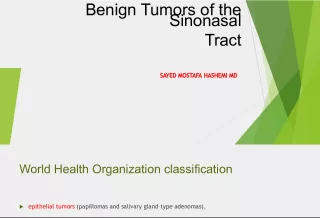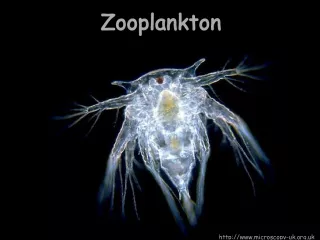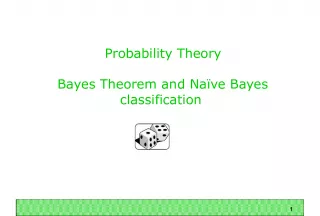Articulations: Understanding Joint Structure and Classification
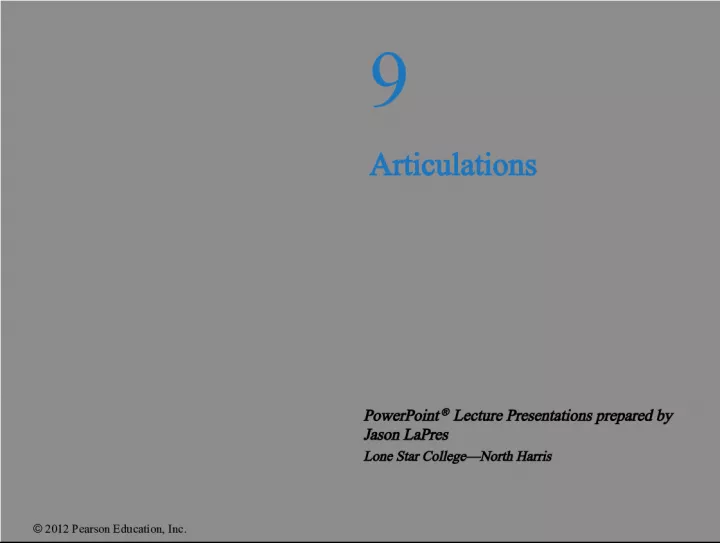

This presentation provides an introduction to articulations and their significance in body movement. The classification of joints based on functional and structural approaches is also explained.
- Uploaded on | 6 Views
-
 journey
journey
About Articulations: Understanding Joint Structure and Classification
PowerPoint presentation about 'Articulations: Understanding Joint Structure and Classification'. This presentation describes the topic on This presentation provides an introduction to articulations and their significance in body movement. The classification of joints based on functional and structural approaches is also explained.. The key topics included in this slideshow are articulations, joint structure, range of motion, joint strength, functional classification, structural classification,. Download this presentation absolutely free.
Presentation Transcript
1. 2012 Pearson Education, Inc. PowerPoint Lecture Presentations prepared by Jason LaPres Lone Star CollegeNorth Harris 9 Articulations
2. 2012 Pearson Education, Inc. An Introduction to Articulations Body movement occurs at joints ( articulations ) where two bones connect Joint structure determines direction and distance of movement ( range of motion or ROM ) Joint strength decreases as mobility increases
3. 2012 Pearson Education, Inc. 9-1 Classification of Joints Two Methods of Classification 1. Functional classification is based on range of motion of the joint 2. Structural classification relies on the anatomical organization of the joint
4. 2012 Pearson Education, Inc. Functional Classifications 1. Synarthrosis - immovable joint : bones fused or nearly fused together 2. Amphiarthrosis- slightly movable joint : joint supports weight of the body 3. Diarthrosis- freely movable joint: capable of precise movement while still supporting that part of the body
5. 2012 Pearson Education, Inc. Structural Classifications based on Material that binds bones together Presence or absence of a joint cavity 1. Bony : 2. Fibrous : amphiarthrosis or synarthrosis 3. Cartilaginous : amphiarthrosis or synarthrosis 4. Synovial : diarthrosis
6. 2012 Pearson Education, Inc. 1. Bony joints Synostosis all synarthrosis No joint cavity Gap between two bones ossifies: forms immovable joint Can form from ossification of either fibrous or cartilaginous joints Examples: F rontal bones Mandibular bones have a fibrous connection which fuses shortly after birth, epiphyseal line in adult long bones
7. 2012 Pearson Education, Inc. 2. Fibrous Joints Figure 9.1 Dense fibrous connective tissue Suture line Root of tooth Socket of alveolar process Periodontal ligament Fibula Tibia Ligament (a) Suture Joint held together with very short, interconnecting fibers, and bone edges interlock. Found only in the skull. (b) Syndesmosis Joint held together by a ligament. Fibrous tissue can vary in length but is longer than in sutures. (c) Gomphosis Peg-in-socket fibrous joint. Periodontal ligament holds tooth in socket. Synarthroses or amphiarthroses No joint cavity; bones held together by fibrous connective tissue:
8. 2012 Pearson Education, Inc. A. Synchondrosis : Bones connected by hyaline cartilage Epiphyseal plate of growing long bones; joints between ribs and sternum Synarthosis B. Symphysis : Bones connected by fibro cartilage Intervertebral discs and pubic symphysis. Amphiarthrosis 3. Cartilaginous Joints - Synarthroses or amphiarthroses
9. 2012 Pearson Education, Inc. 4. Synovial Joints All are diarthroses Most common in body. Found at ends of long bones Have a synovial cavity (joint cavity) filled with synovial fluid Movement can be monaxial, biaxial or triaxial
10. 2012 Pearson Education, Inc. Periosteum Ligament Fibrous capsule Synovial membrane Joint cavity (contains synovial fluid ) Articular (hyaline) cartilage Articular capsule (a) A typical synovial joint General Structure of Synovial Joints Figure 9.3a Bones held together by a two-layered articular capsule and by ligaments . Bones separated by joint cavity containing synovial fluid Articular (hyaline) cartilage at ends of articulating bones to reduce friction, absorb shock and protect ends of bones
11. 2012 Pearson Education, Inc. Synovial Fluid A viscous fluid formed from secretions of synovial membrane and interstitial fluid 3-4 ml in knee joint Functions of synovial fluid 1. Lubrication and reduce friction 2. Shock absorption 3. Supplies nutrients & oxygen, removes wastes from articular cartilage 4. Contains phagocytic cells for protection
12. 2012 Pearson Education, Inc. Articular capsule ( Joint capsule ). joint cavity is enclosed in a two-layered capsule Fibrous capsule outer layer of dense irregular connective tissue Strengthens joint continuous with the periostea of the two articulating bones Synovial membrane inner layer of loose connective tissue Lines joint capsule and covers internal joint surfaces This membrane does not cover the articulating surfaces Functions to make synovial fluid
13. 2012 Pearson Education, Inc. Accessory Structures: Cartilages, Fat pads, Ligaments, Tendons, Bursae Articular Disc/Meniscus Fibrocartilage pad found in some joints Function to tightly bind the bones in joint (eg sternoclavicular joint) or to cushion the joint (knee joint) Torn cartilage : tearing of meniscus; common sports injury Fat Pads Superficial to the joint capsule Protect articular cartilages
14. 2012 Pearson Education, Inc. Ligaments Join bone to bone Support, strengthen joints Extracapsular ligaments located outside the capsule Intracapsular ligaments located internal to the capsule Tendons Attach muscle to bone strips or sheets of tough dense regular connective tissue Help support joint, limit movement
15. 2012 Pearson Education, Inc. Bursae ( Singular, bursa , a pouch) Small, thin fibrous sacs lined with synovial membrane and filled with synovial fluid Located outside joint capsule Cushion movement between certain areas of body, often where tendons or ligaments rub against other tissues Reduce friction and absorb shock in certain areas where May be connected to joint cavity or separate from it Bursitis : inflammation of bursae (trauma, infection, rheumatoid arthritis)
16. 2012 Pearson Education, Inc. Figure 9-1b The Structure of a Synovial Joint Knee joint, sagittal section Synovial membrane Intracapsular ligament Joint capsule Meniscus Femur Tibia Quadriceps tendon Patella Articular cartilage Fat pad Patellar ligament Joint cavity Meniscus Bursa
17. 2012 Pearson Education, Inc. 9-3 Types of Movement at Synovial Joints Four Types of Dynamic Motion 1. Linear movement ( gliding ) 2. Angular movement 3. Rotation 4. Special movements
18. 2012 Pearson Education, Inc. 1. Linear: Gliding Movement Two surfaces slide past each other Between carpal or tarsal bones Acromioclavicular and claviculosternal joints
19. 2012 Pearson Education, Inc. 2. Angular Movement Flexion Anteriorposterior plane Reduces angle between elements Extension Anteriorposterior plane Increases angle between elements Hyperextension Angular motion Extension past anatomical position
20. 2012 Pearson Education, Inc. 2. Angular Movement Abduction Frontal plane Moves away from longitudinal axis Adduction Frontal plane Moves toward longitudinal axis
21. 2012 Pearson Education, Inc. 2. Angular Movement Adduction/abduction Abduction Adduction
22. 2012 Pearson Education, Inc. 2. Angular Movement Circumduction Circular motion without rotation
23. 2012 Pearson Education, Inc. 3. Rotation Direction of rotation from anatomical position Relative to longitudinal axis of body Left or right rotation Medial rotation ( inward rotation ) Rotates toward axis Lateral rotation ( outward rotation ) Rotates away from axis
24. 2012 Pearson Education, Inc. 3. Rotation Supination Forearm in anatomical position Pronation Rotates forearm, distal end of radius crosses over distal end of ulna Turns the wrist and hand from palm facing front to palm facing back
25. 2012 Pearson Education, Inc. Classification of Synovial Joints by Shape of articulating surfaces Each type permits a different range and type of movement 1. Gliding 2. Hinge 3. Pivot 4. Condylar 5. Saddle 6. Ball-and-socket
26. 2012 Pearson Education, Inc. 1. Gliding (Planar) Joints Flattened or slightly curved faces Side-to-side and back-and-forth gliding movements. Limited motion,
27. 2012 Pearson Education, Inc. 2. Hinge Joints Concave surface of one bone articulates with and fits into the convex surface of another bone. Flexion or extension
28. 2012 Pearson Education, Inc. 3. Pivot Joints Round or pointed surface of one bone fits into a ring formed by another bone and a ligament. Rotation
29. 2012 Pearson Education, Inc. 4. Condylar Joints Oval-shaped condyle of a bone fits into an elliptical cavity of another bone Flexion, extension, adduction, abduction, circumduction
30. 2012 Pearson Education, Inc. 5. Saddle Joints Articular facets fit together like a rider in a saddle
31. 2012 Pearson Education, Inc. 6. Ball-and-socket Joints Ball-shaped surface of a bone fits into the cup-like depression of the second bone. Flexion, extension, abduction, adduction, rotation, circumduction.
32. 2012 Pearson Education, Inc. Joint Mobility & Strength A joint cannot be both mobile and strong The greater the mobility, the weaker the joint Mobile joints are supported by muscles and ligaments , not bone-to-bone connections
33. 2012 Pearson Education, Inc. Articulations Axial skeleton articulations Typically are strong but very little movement Appendicular skeleton articulations Typically have extensive range of motion Often weaker than axial articulations
34. 2012 Pearson Education, Inc. Intervertebral Discs Pads of fibrocartilage that separate vertebral bodies of vertebrae Axis to L5 Account for length of vertebral column Water loss from discs causes shortening of vertebral column with age and increases risk of disc injury Consist of: Outer Anulus fibrosus Tough layer of fibrous cartilage Collagen fibers attach to adjacent vertebrae Inner Nucleus pulposus Soft, elastic, gelatinous core Provides resiliency and shock absorption
35. 2012 Pearson Education, Inc. Figure 9-7 Intervertebral Articulations Vertebral end plate Anulus fibrosus Nucleus pulposus Spinal cord Spinal nerve Intervertebral Disc Superior articular facet Intervertebral foramen Ligamentum flavum Posterior longitudinal ligament Interspinous ligament Supraspinous ligament Anterior longitudinal ligament
36. 2012 Pearson Education, Inc. Damage to Intervertebral Discs Slipped disc Bulge in anulus fibrosus Disc bulges into vertebral canal (doesnt actually slip) Herniated disc Nucleus pulposus breaks through anulus fibrosus Presses on spinal cord or nerves
37. 2012 Pearson Education, Inc. Figure 9-8a Damage to the Intervertebral Discs Normal intervertebral disc Slipped disc T 12 L 1 L 2 A lateral view of the lumbar region of the spinal column, showing a distorted intervertebral disc (a slipped disc)
38. 2012 Pearson Education, Inc. Figure 9-8b Damage to the Intervertebral Discs Compressed area of spinal nerve Nucleus pulposus of herniated disc Spinal nerve Spinal cord Anulus fibrosus A sectional view through a herniated disc, showing the release of the nucleus pulposus and its effect on the spinal cord and adjacent spinal nerves
39. 2012 Pearson Education, Inc. 9-5 The Shoulder Joint The Shoulder Joint (glenohumeral joint) Allows more motion than any other joint Is the least stable Ball-and-socket diarthrosis: head of humerus and glenoid cavity of scapula
40. 2012 Pearson Education, Inc. Glenoid labrum Deepens socket of glenoid cavity Fibrocartilage lining that extends past the bone Acromion and coracoid process of scapula help stabilize the shoulder joint Surrounding skeletal muscles, tendons and ligaments provide some stability and limit range of motion Especially Rotator cuff muscles & tendons: Supraspinatus, Infraspinatus, Subscapularis, Teres minor
41. 2012 Pearson Education, Inc.
42. 2012 Pearson Education, Inc. Coracoid process Clavicle Acromion Bursae Articular capsule Scapula Humerus Tendon of the biceps brachii muscle Ligaments Stabilizing the Shoulder Coracoclavicular ligaments Acromioclavicular ligament Coraco-acromial ligament Coracohumeral ligament Glenohumeral ligaments
43. 2012 Pearson Education, Inc. Shoulder Separation Common sports injury Partial or complete dislocation of the acromioclavicular joint Shoulder Dislocation Head of the humerus becomes displaced inferiorly where articular capsule is least protected
44. 2012 Pearson Education, Inc. 9-5 The Elbow Joint The Elbow Joint A stable hinge joint Articulations involving humerus, radius, and ulna
45. 2012 Pearson Education, Inc. The Elbow Joint is extremely strong and stable due to: 1. Bony surfaces of humerus and ulna interlock 2. Single, thick articular capsule surrounds both humero- ulnar and proximal radio-ulnar joints 3. Articular capsule reinforced by strong ligaments Severe stresses can still produce dislocations or other injuries Example: nursemaids elbow
46. 2012 Pearson Education, Inc. Humero-ulnar joint largest and strongest of elbow articulations Trochlea of humerus articulates with trochlear notch of ulna: Hinge movement Shape of trochlear notch determines plane of movement Shapes of olecranon fossa and olecranon limit degree of extension Humero-radial joint Smaller articulation Capitulum of humerus articulates with head of radius Note: Proximal radio-ulnar joint is not part of elbow joint
47. 2012 Pearson Education, Inc. The elbow joint Anterior view Humerus Humeroradial joint Humeroulnar joint Ulna Radius Proximal radio-ulnar joint (not part of the elbow joint)
48. 2012 Pearson Education, Inc. The elbow joint Humeroulnar joint Posterior view Olecranon fossa Olecranon Ulna Humerus
49. 2012 Pearson Education, Inc. Figure 9-10a The Right Elbow Joint Showing Stabilizing Ligaments Lateral view Capitulum Humerus Radius Ulna Radial collateral ligament Radial tuberosity Antebrachial interosseous membrane Annular ligament (covering head and neck of radius) Elbow joint: Reinforcing ligaments - Radial collateral ligament - Ulnar collateral ligament - Annular ligament
50. 2012 Pearson Education, Inc. 9-6 The Hip Joint The Hip Joint ( Coxal joint ) Strong ball-and-socket diarthrosis Wide range of motion
51. 2012 Pearson Education, Inc. The Hip Joint Head of femur fits into a socket, the acetabulum which is extended by fibrocartilaginous acetabular labrum
52. 2012 Pearson Education, Inc. Ligaments of the Hip Joint: Iliofemoral, Pubofemoral, Ischiofemoral, Transverse acetabular, Ligamentum teres
53. 2012 Pearson Education, Inc. 9-6 The Knee Joint A complicated hinge joint Flexion, extension, some rotation Weight transferred from hip joint to femur Knee joint transfers the weight from femur to tibia
54. 2012 Pearson Education, Inc. 9-6 The Knee Joint Articulations of the knee joint 1. Medial condyle of tibia to medial condyle of femur 2. Lateral condyle of tibia to lateral condyle of femur 3. Patella and patellar surface of femur Permits flexion, extension, and very limited rotation
55. 2012 Pearson Education, Inc. External support of Knee Joint Quadriceps tendon to patella Continues as patellar ligament to anterior tibia Fibular collateral ligament Lateral support Tibial collateral ligament Medial support Popliteal ligaments Posterior support extending between femur and heads of tibia and fibula Tendons of several muscles that attach to femur and tibia
56. 2012 Pearson Education, Inc. Superficial anterior view Superficial posterior view The knee joint Quadriceps tendon Fibular collateral ligament Fibula Tibia Patellar ligament Patella Joint capsule Bursa Tibial collateral ligament Popliteal ligaments Femur Tibia Fibula Fibular collateral ligament Cut tendon of biceps femoris muscle
57. 2012 Pearson Education, Inc. Internal support of Knee joint Cruciate ligaments limit anterior/posterior movement of femur and maintain alignment of condyles Anterior cruciate ligament (ACL) When knee is extended, ACL is pulled tight and prevents hyperextension Prevents the tibia from moving too far anteriorly on the femur Posterior cruciate ligament (PCL) prevents hyperflexion of knee joint Prevents the tibia from moving too far posteriorly on the femur
58. 2012 Pearson Education, Inc. Medial and lateral menisci Fibrous cartilage pads between tibial and femoral condyles Act as cushions and provide lateral stability to joint
59. 2012 Pearson Education, Inc. Deep anterior view, flexed Fibular collateral ligament Fibula Tibia Lateral condyle Medial condyle Patellar surface of femur PCL ACL PCL ACL Tibial collateral ligament Medial and lateral menisci Medial condyle Lateral condyle Fibular collateral ligament Tibia Fibula Femur Deep posterior view, extended The knee joint
60. 2012 Pearson Education, Inc. Figure 9-12b The Right Knee Joint Posterior view, superficial layer Tibial collateral ligament Joint capsule Bursa Popliteal ligaments Popliteus muscle Femur Tibia Fibula Cut tendon of biceps femoris muscle Fibular collateral ligament Gastrocnemius muscle, lateral head Plantaris muscle Gastrocnemius muscle, medial head
61. 2012 Pearson Education, Inc. Joint Injuries and Disorders Rheumatism: General term for pain and stiffness affecting the musculoskeletal systems Arthritis: Pain and inflammation of the joints Involves damage of the articular cartilages but causes can vary
62. 2012 Pearson Education, Inc. Osteoarthritis Also known as degenerative arthritis or degenerative joint disease Affects larger joints such as hip and knee Generally affects individuals age 60 and older Can result from cumulative wear and tear of joints or genetic factors affecting collagen formation Rheumatoid Arthritis Autoimmune disease where w hite blood cells attack articular cartilages More common in women Inflammation, swelling , severe pain Joint becomes immovable, fingers can become distorted Gouty Arthritis Occurs when uric acid crystals form within joint Joint may become immovable Due to genetic metabolic disorders, diet, stress
63. 2012 Pearson Education, Inc. Arthroscopy Optical fibers (arthroscope) inserted into joint through small incision without major surgery to visualize joint interior If necessary, other instruments can be inserted through other incisions to permit surgery within view of arthroscope- Arthroscopic surgery Magnetic resonance imaging Cost-effective and noninvasive viewing technique that allows examination of soft tissues around joint as well
64. 2012 Pearson Education, Inc. Artificial joints If other solutions (exercise, physical therapy, drugs) for joint problems fail Not as strong as natural joints Typically have service life of about 10 years 3-D Printing-custom made joints
65. 2012 Pearson Education, Inc.
66. 2012 Pearson Education, Inc. Sprains - Stretched or torn ligaments but no dislocation of the bones - Ankle is most common joint to be sprained - Treatment includes RICE: rest, ice, compression, elevation. Dislocation ( luxation ) Movement beyond normal range of motion Displacement of bone out of its normal position Tearng of ligaments, tendons and articular cartilage. No pain from inside joint but from nerves or surrounding structures Subluxation : A partial dislocation
